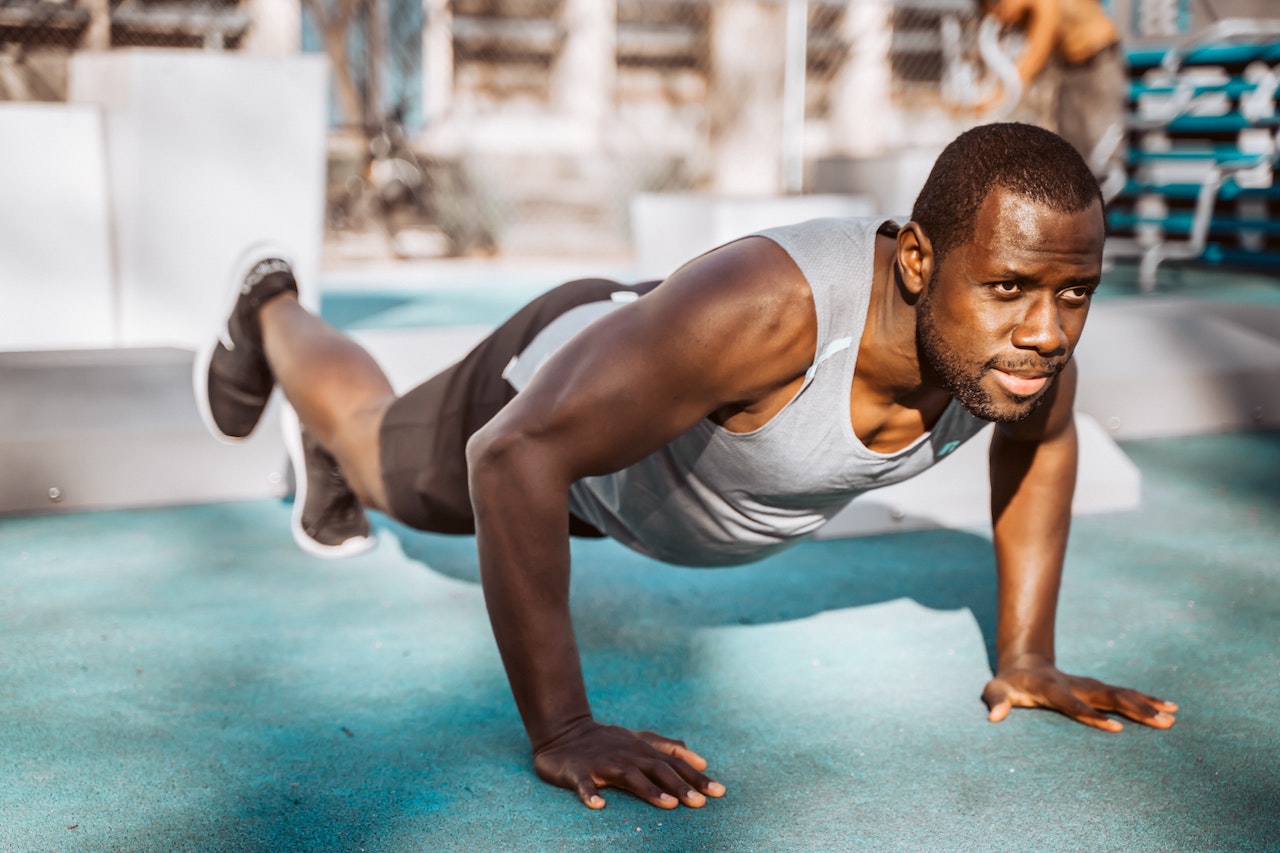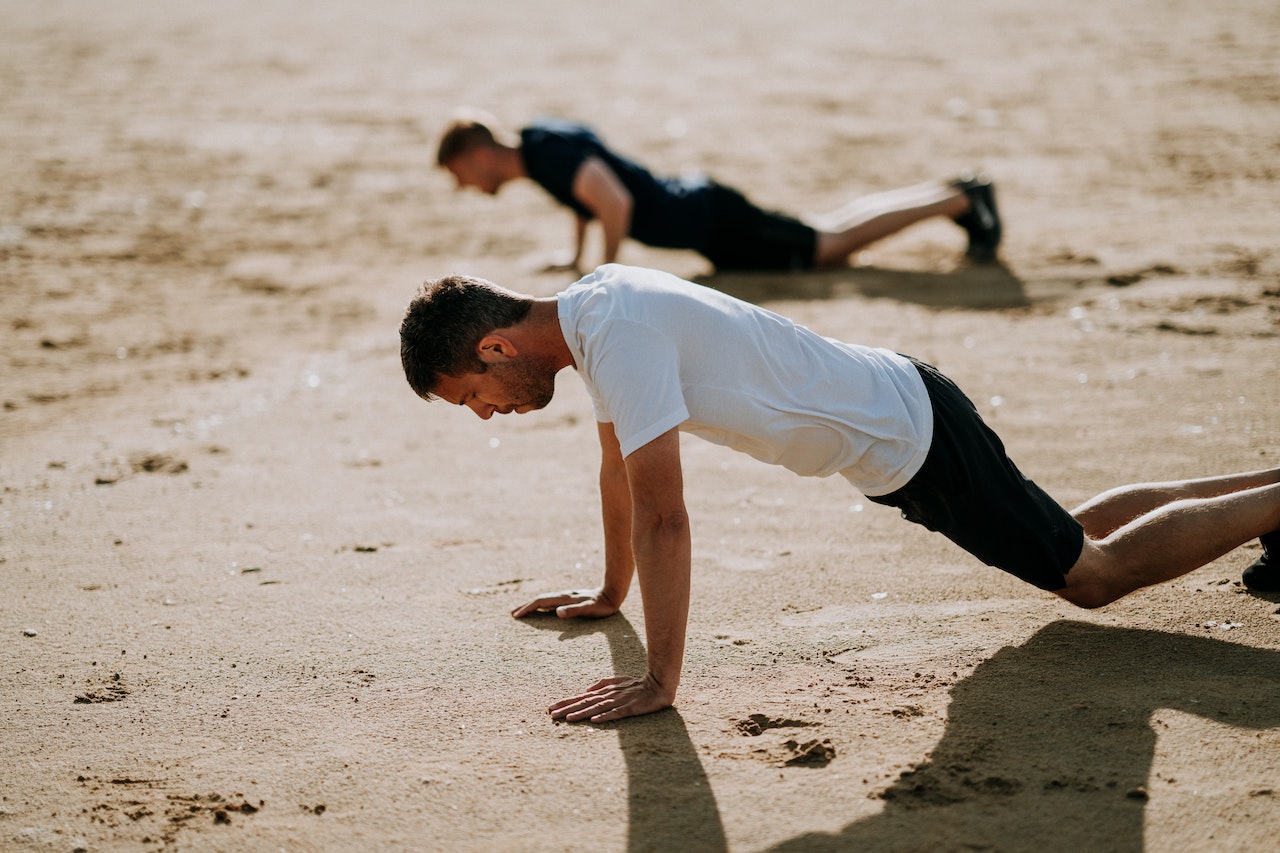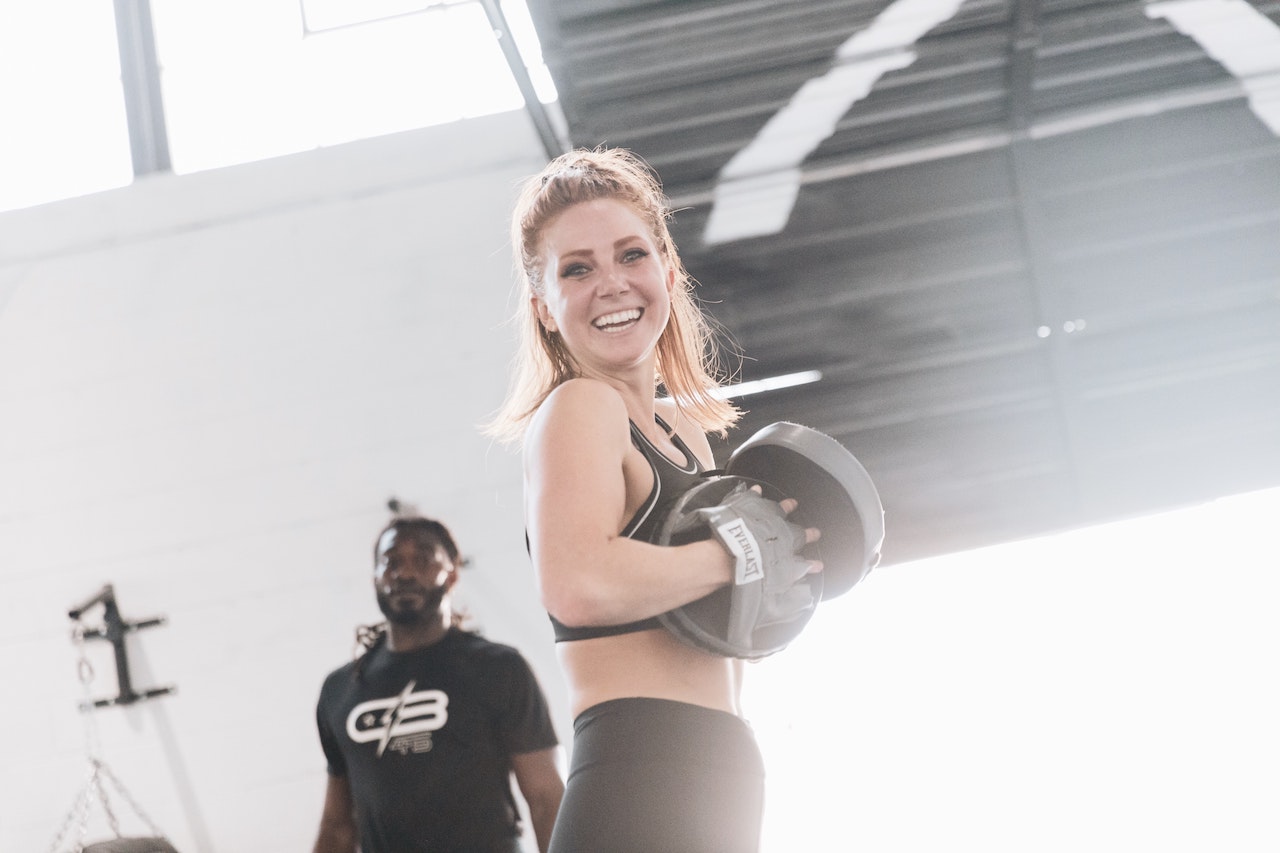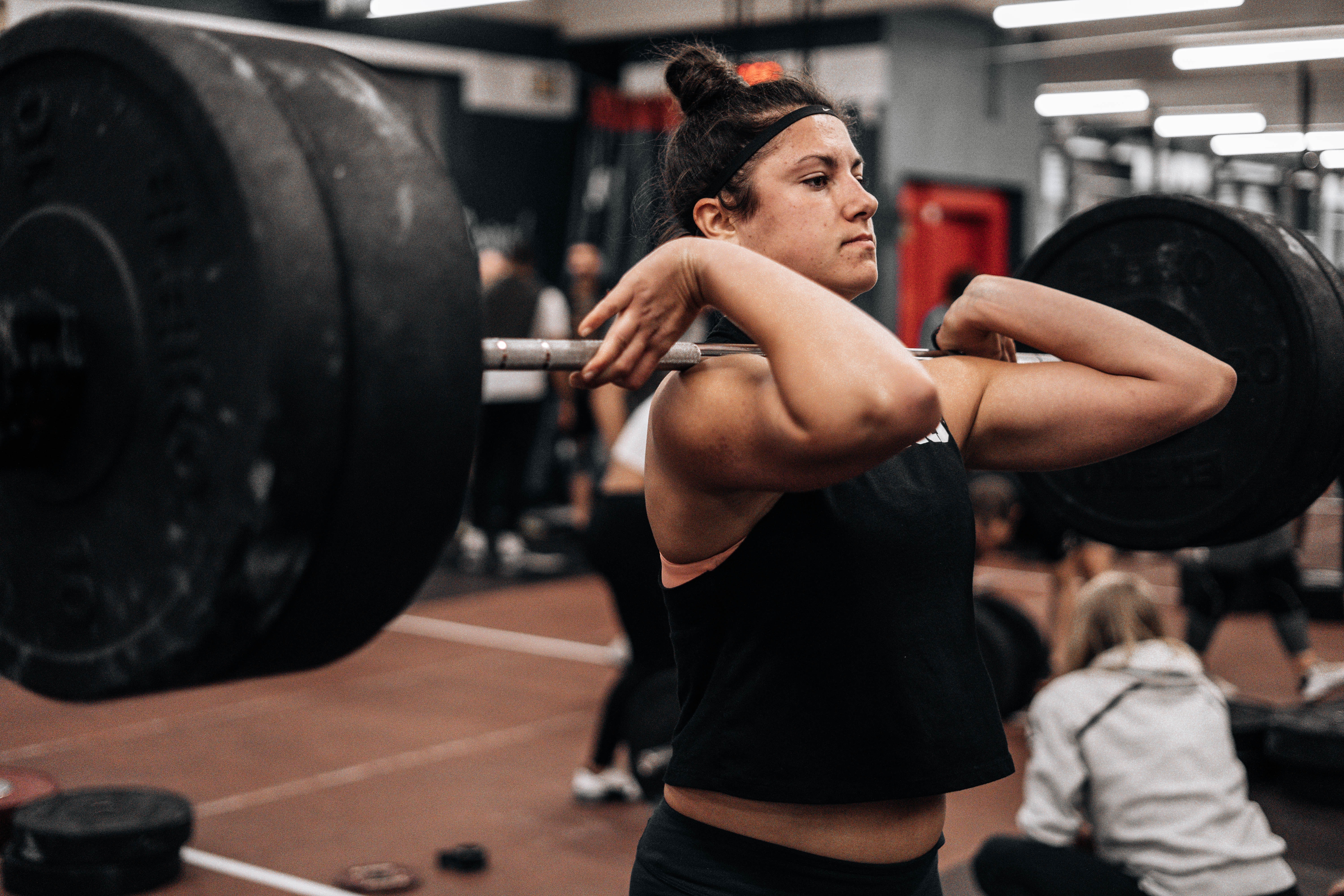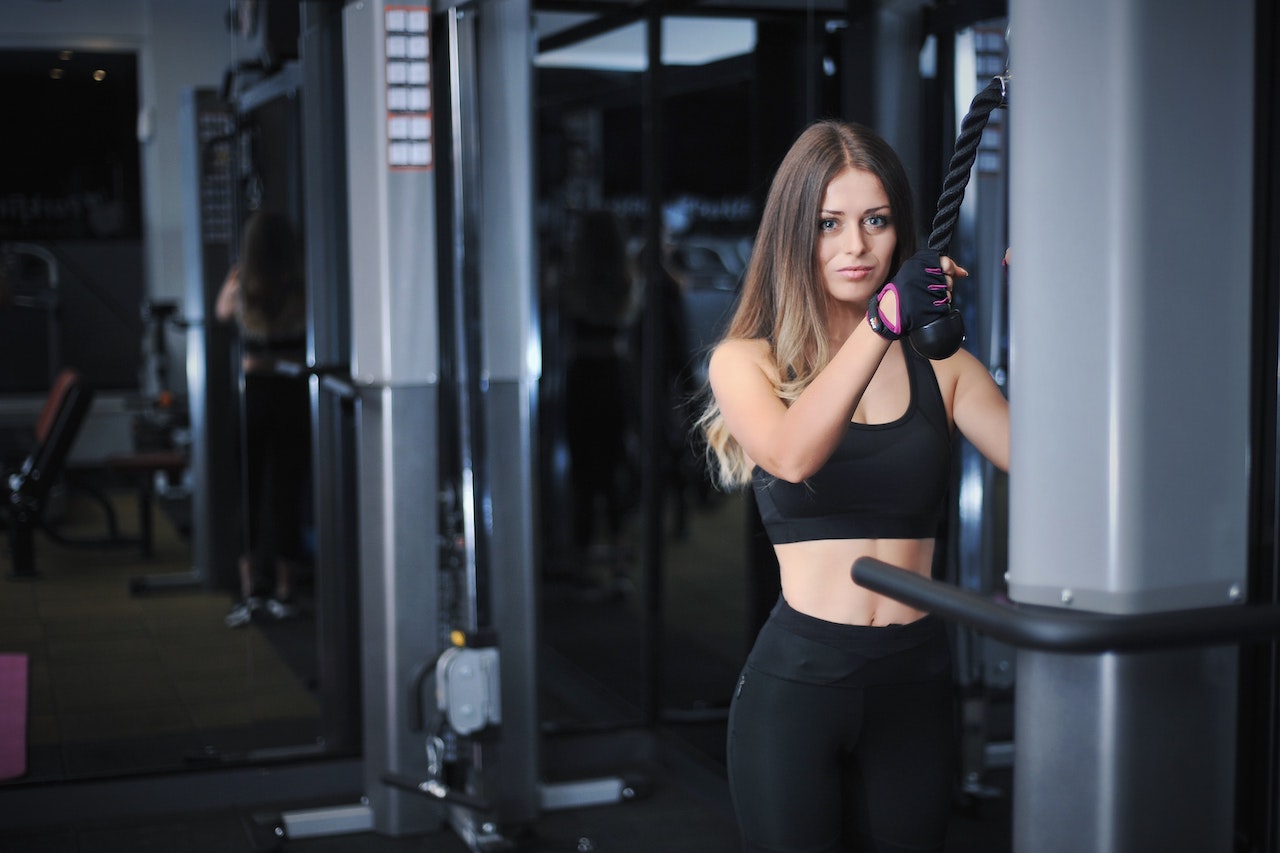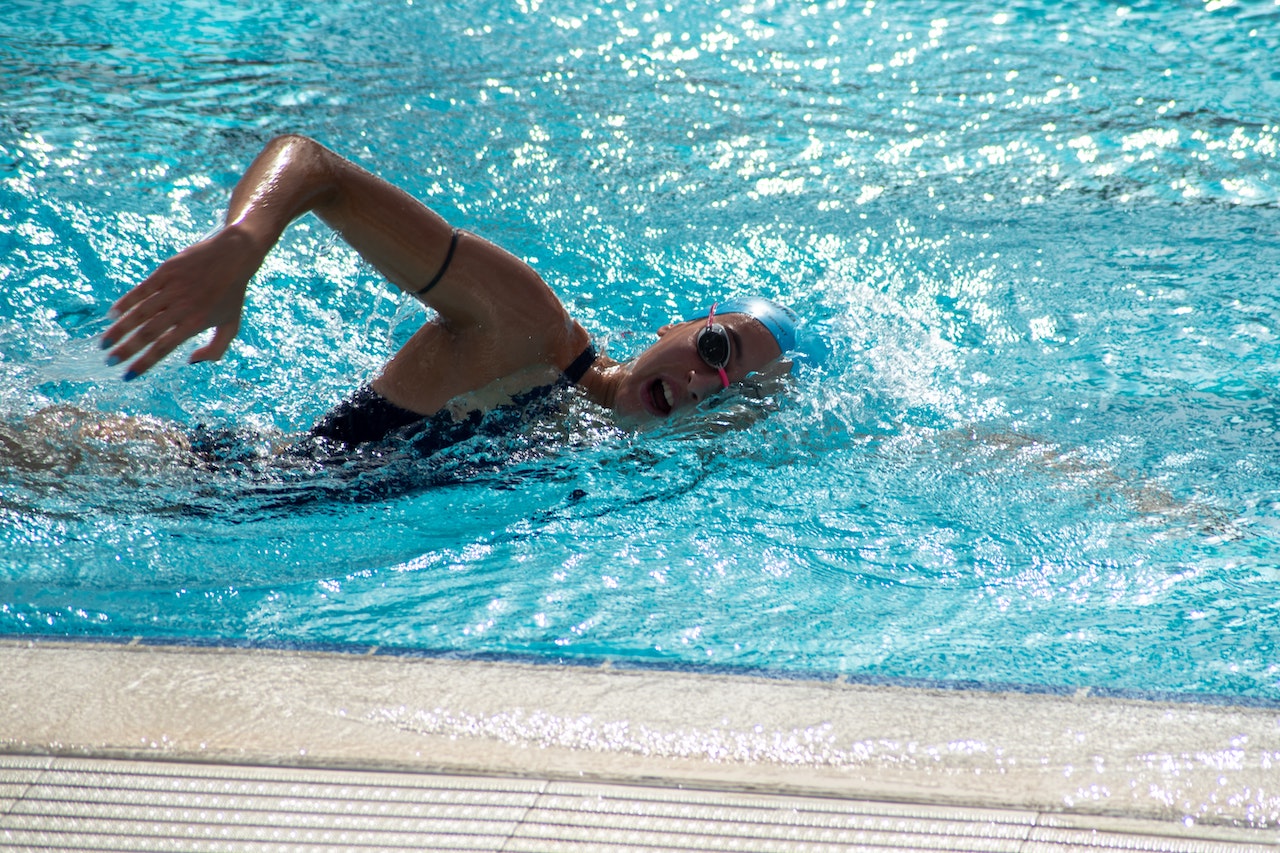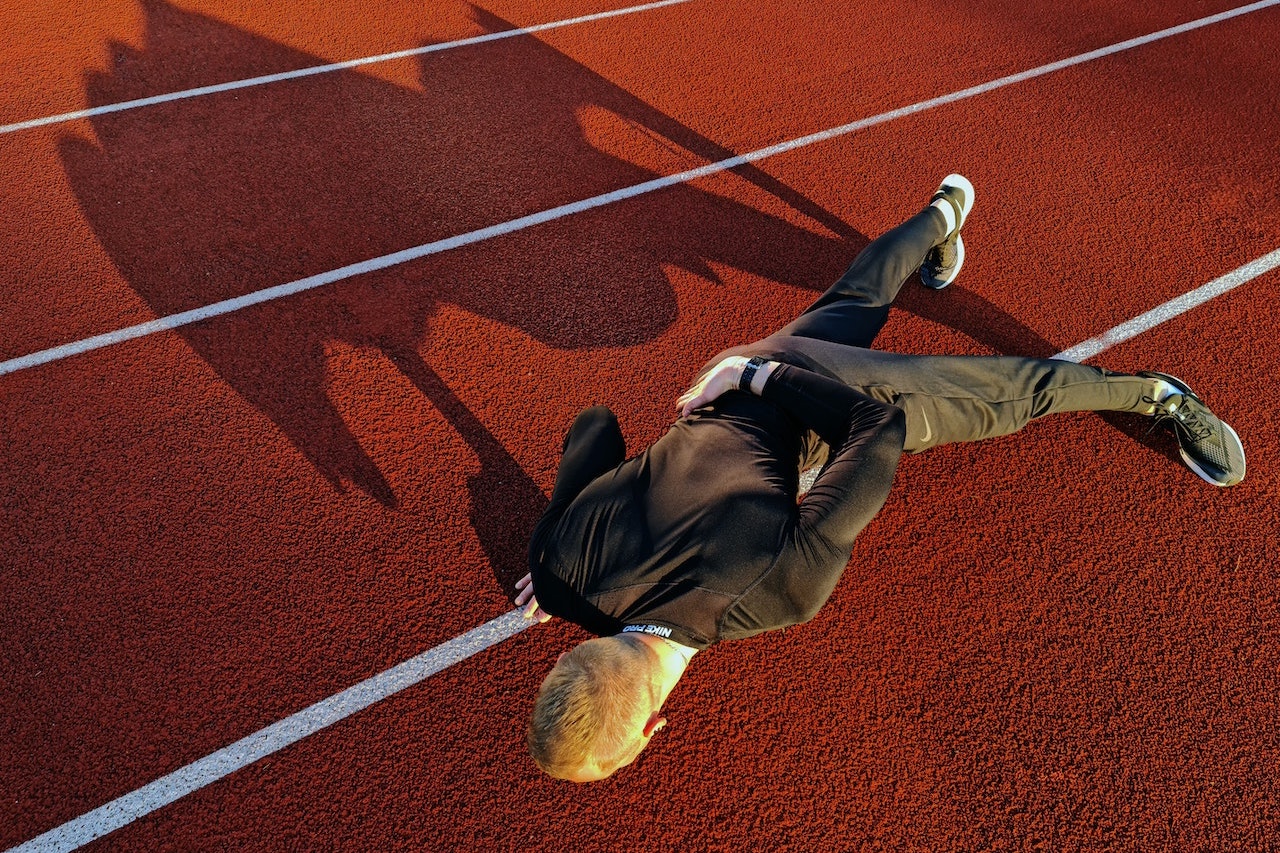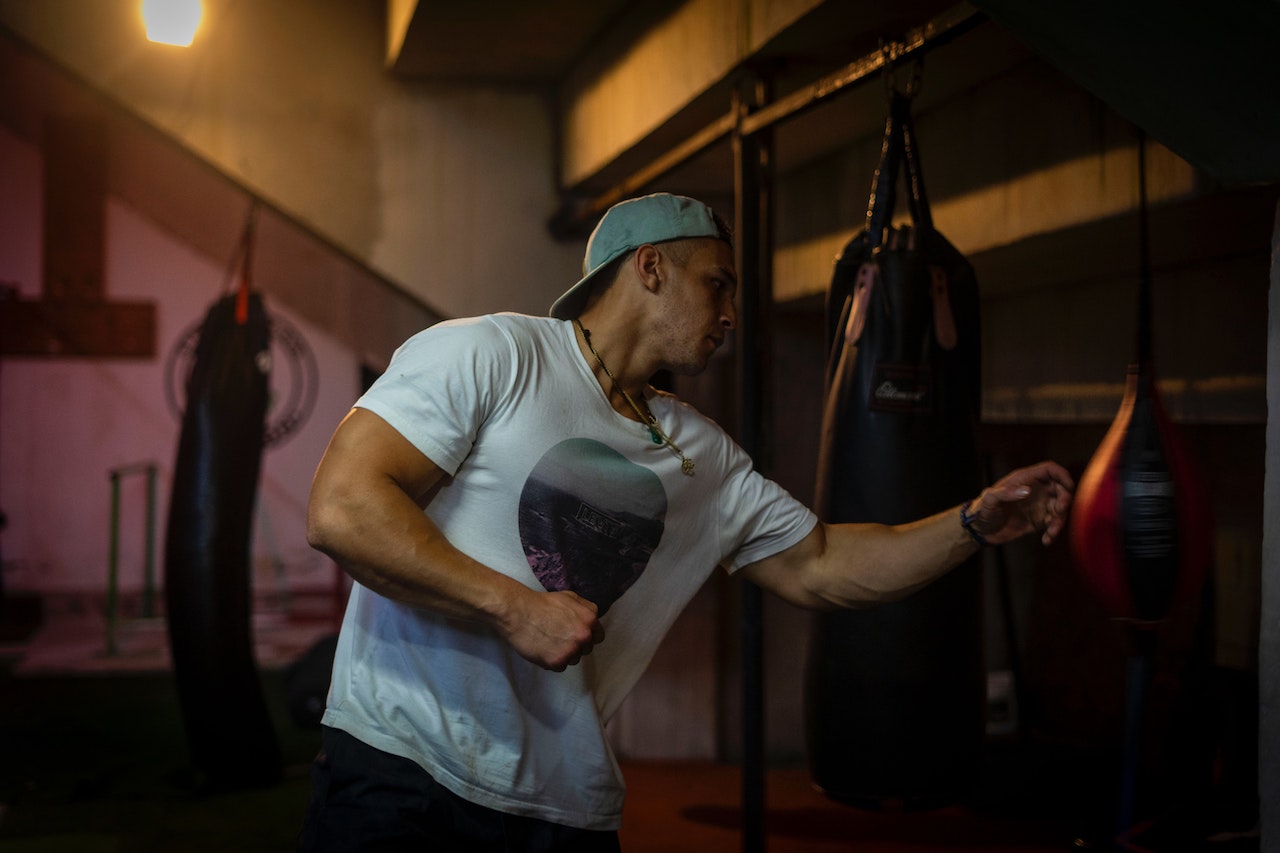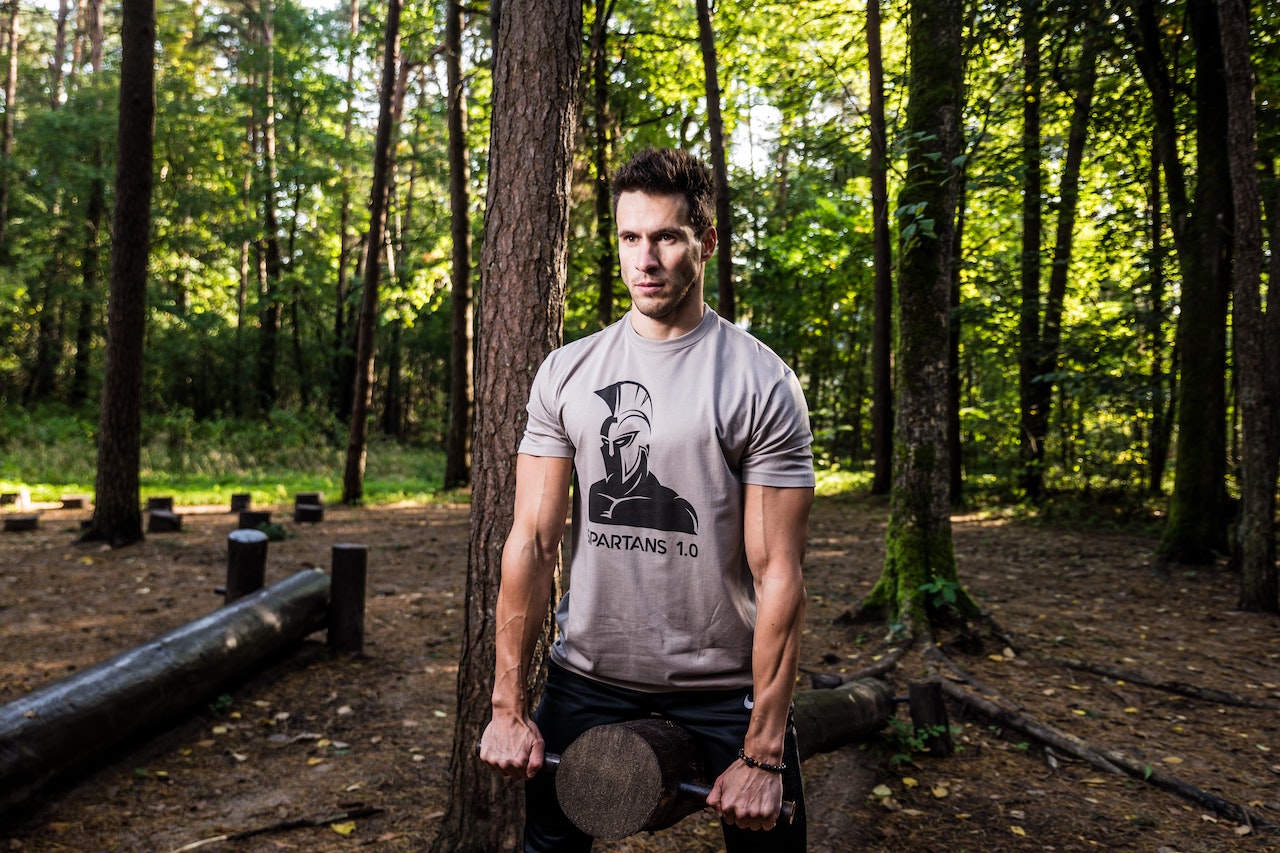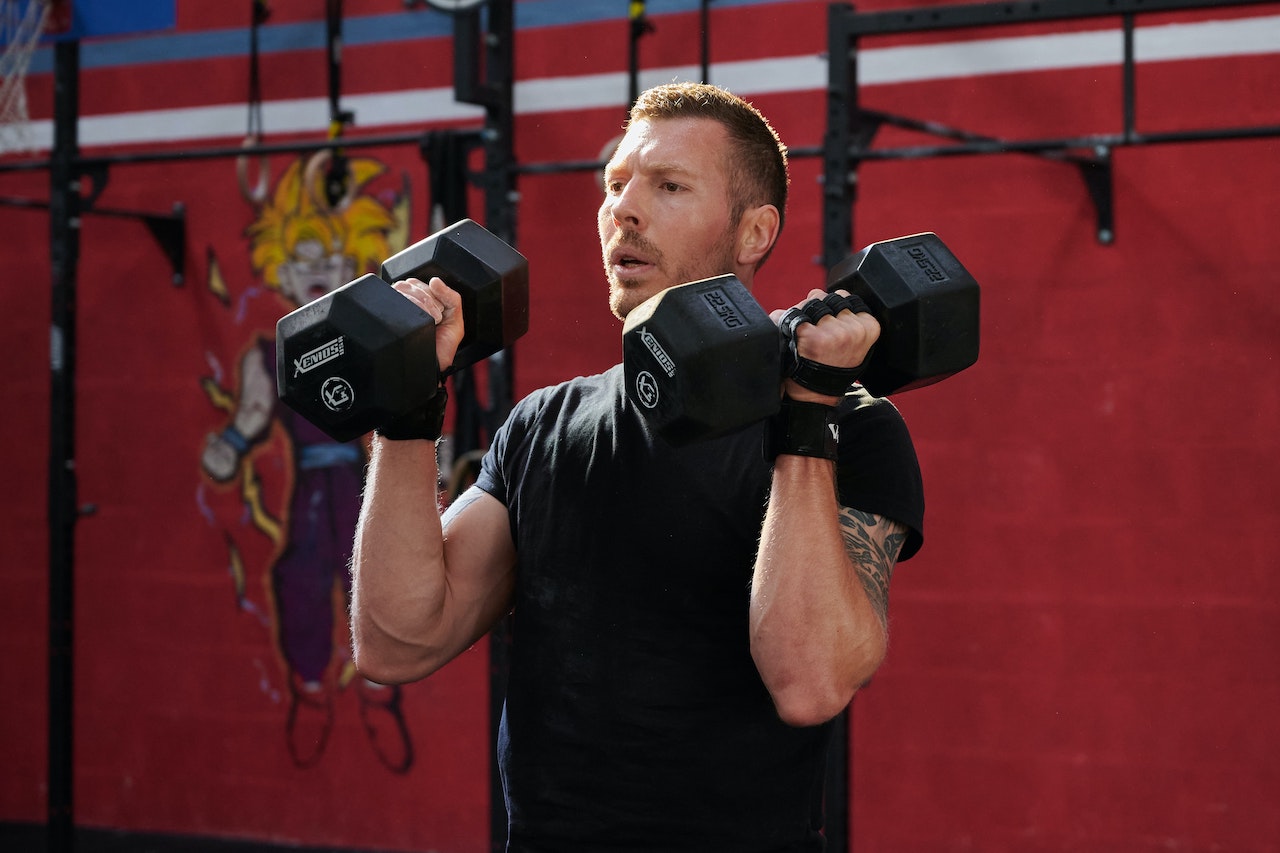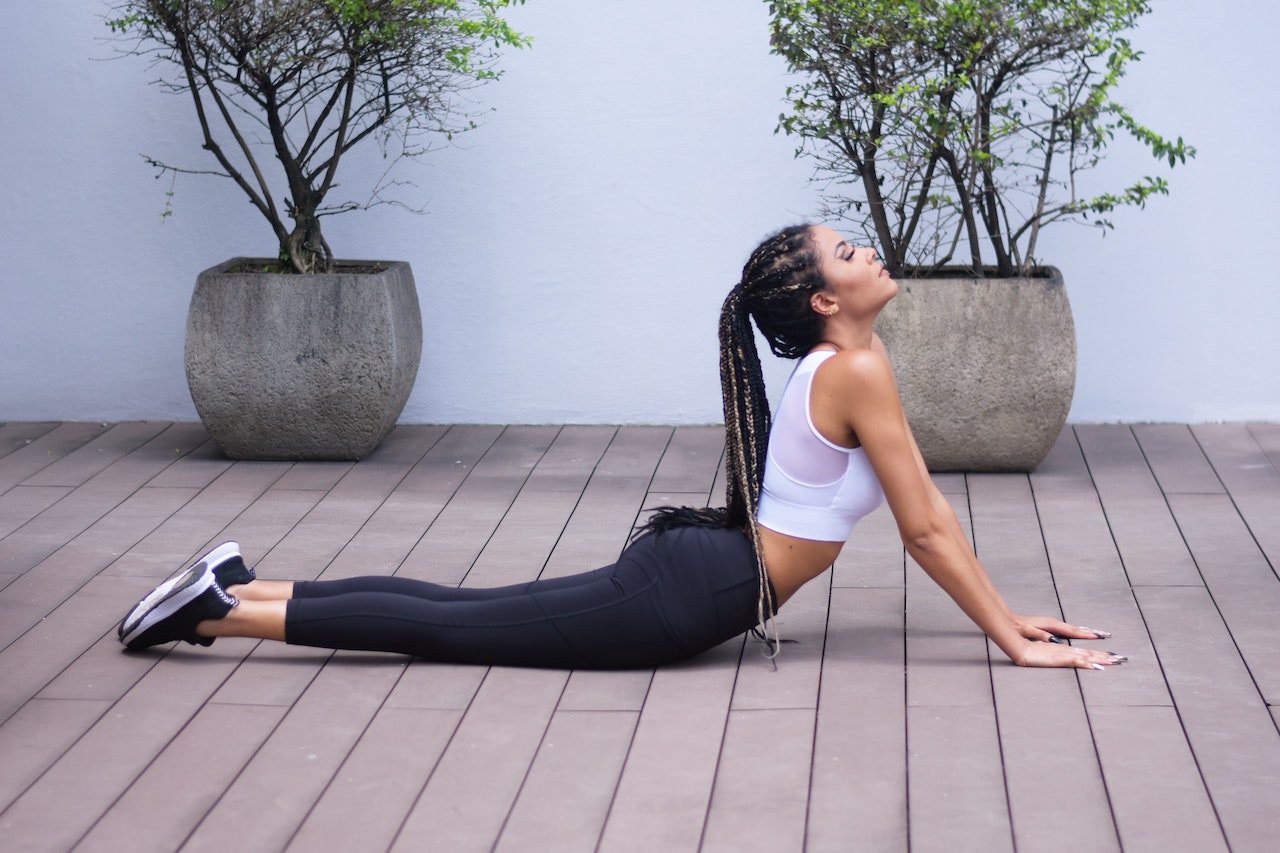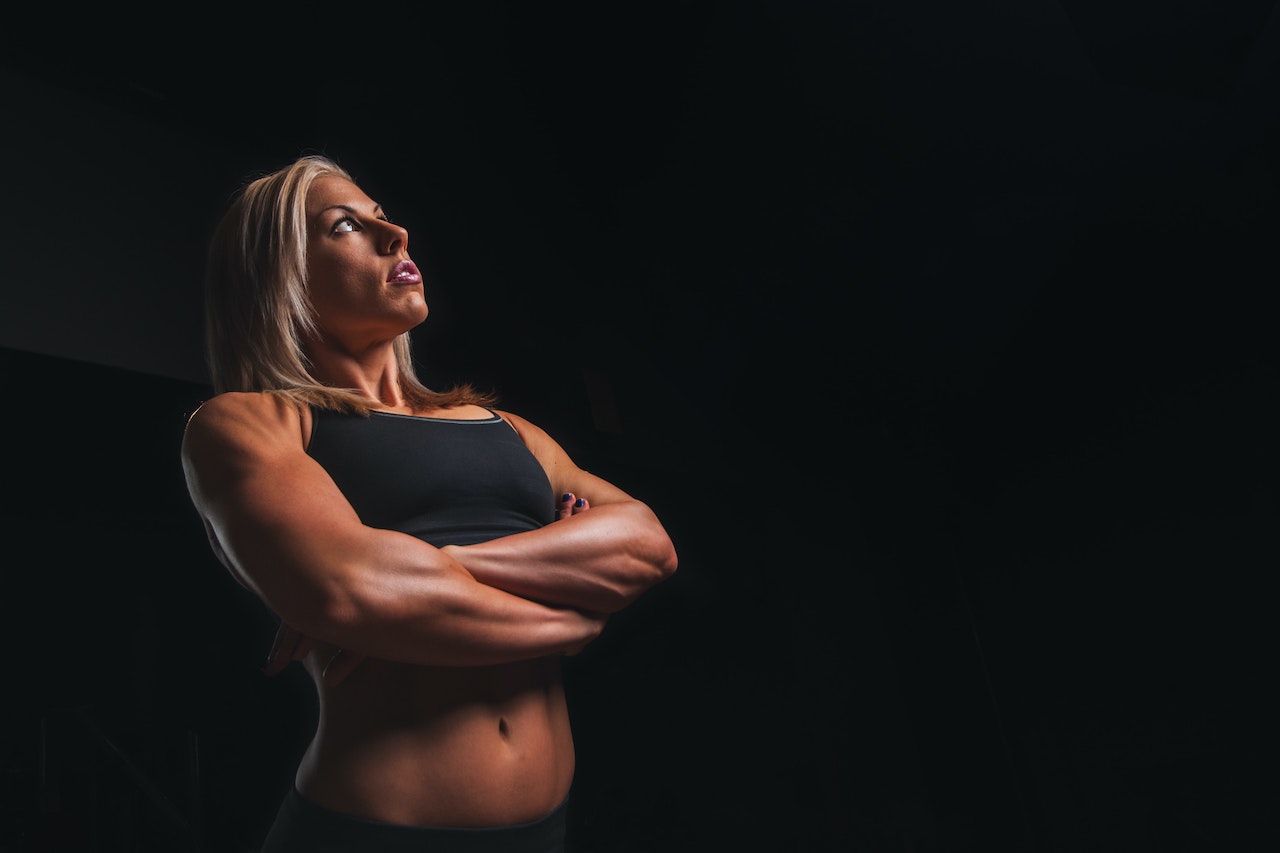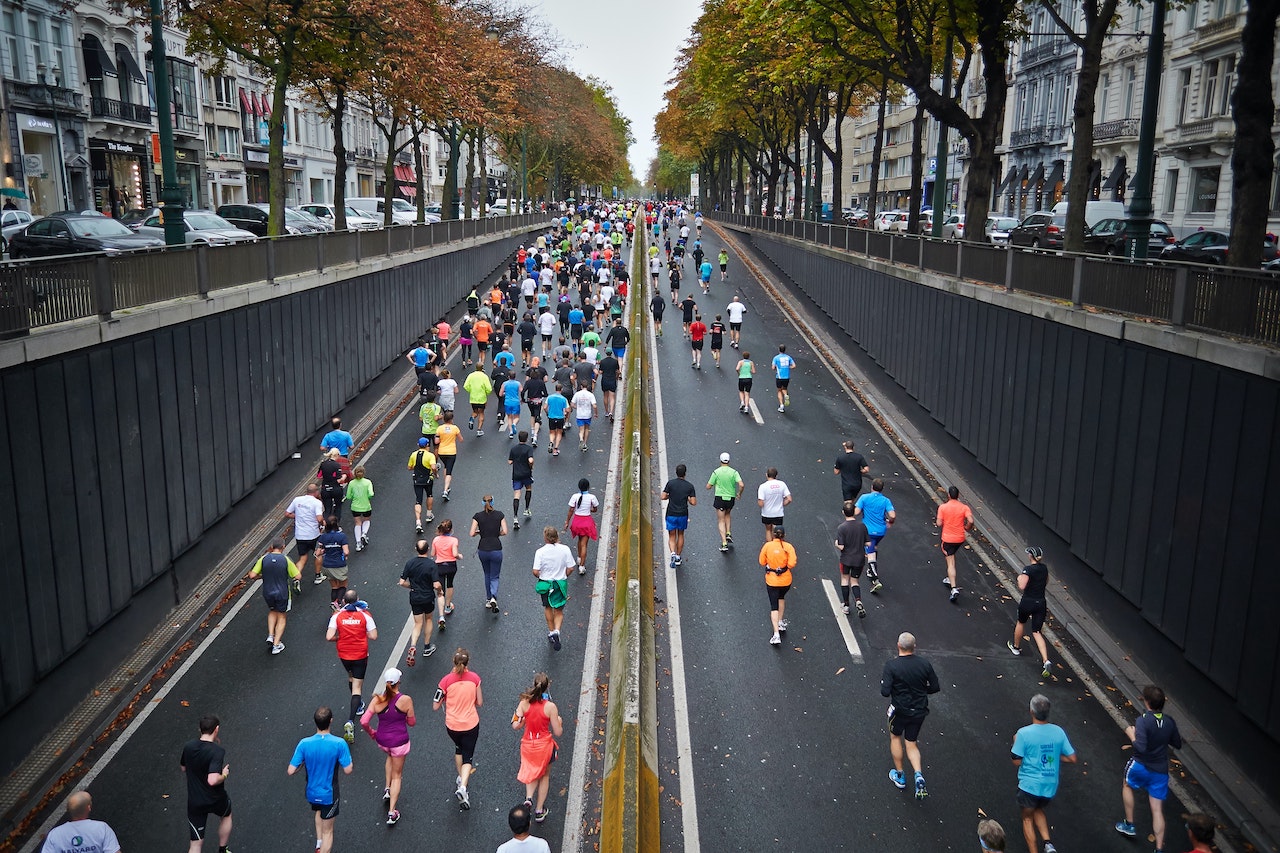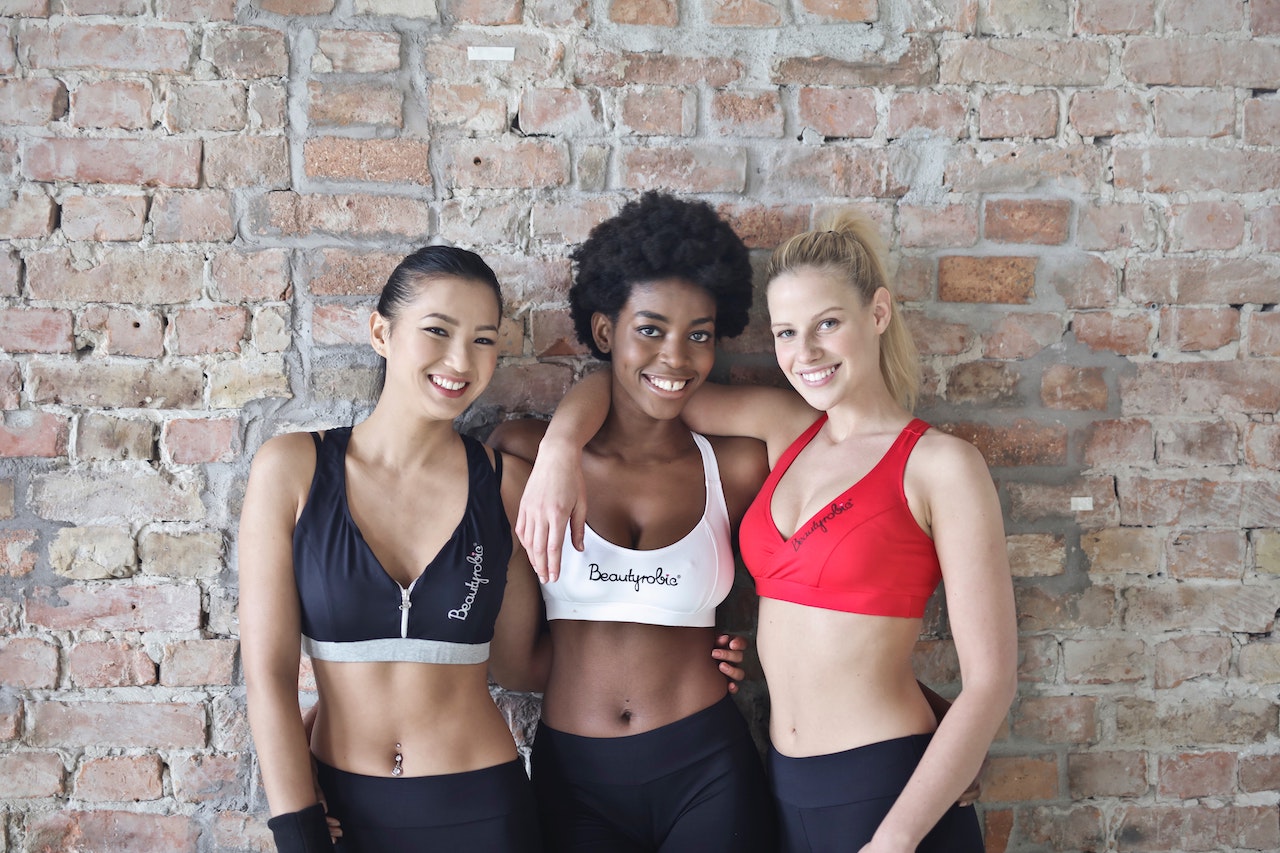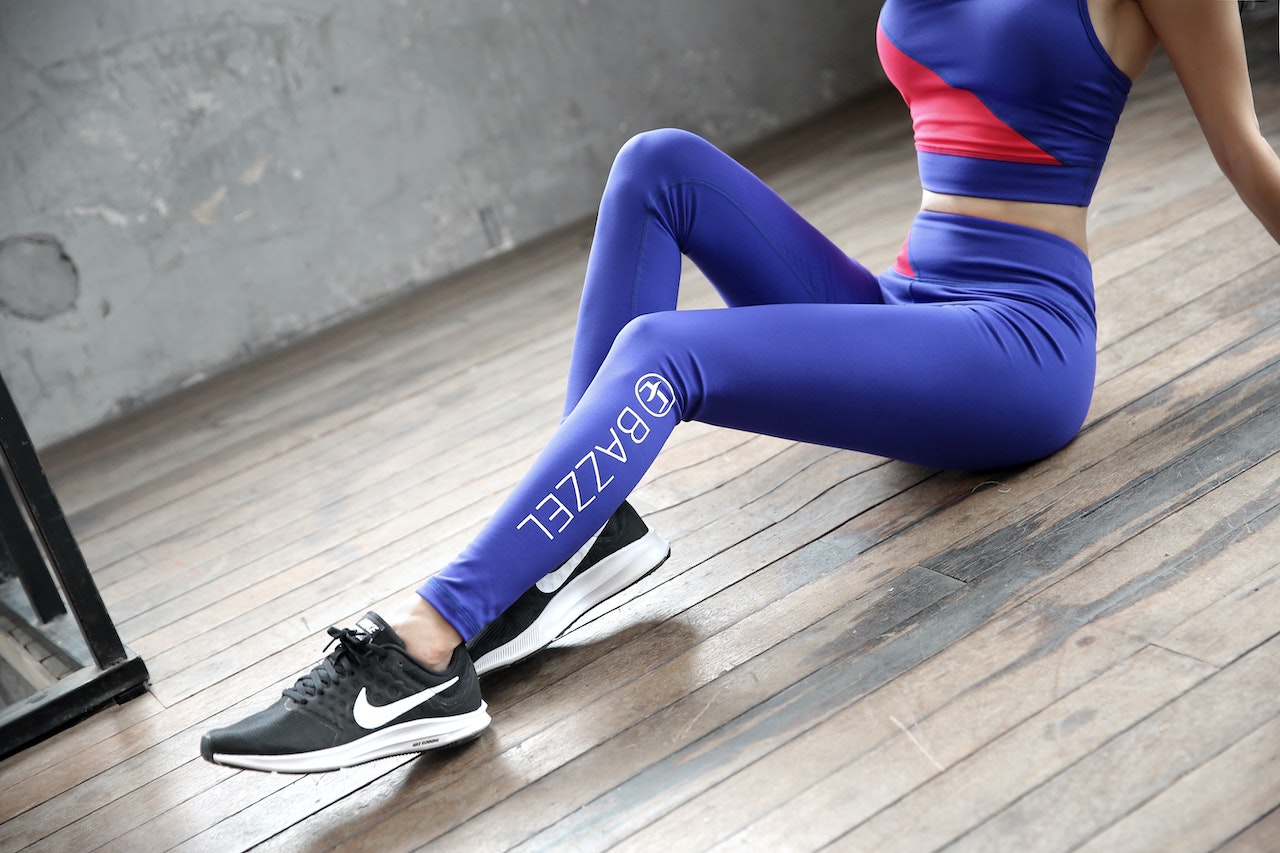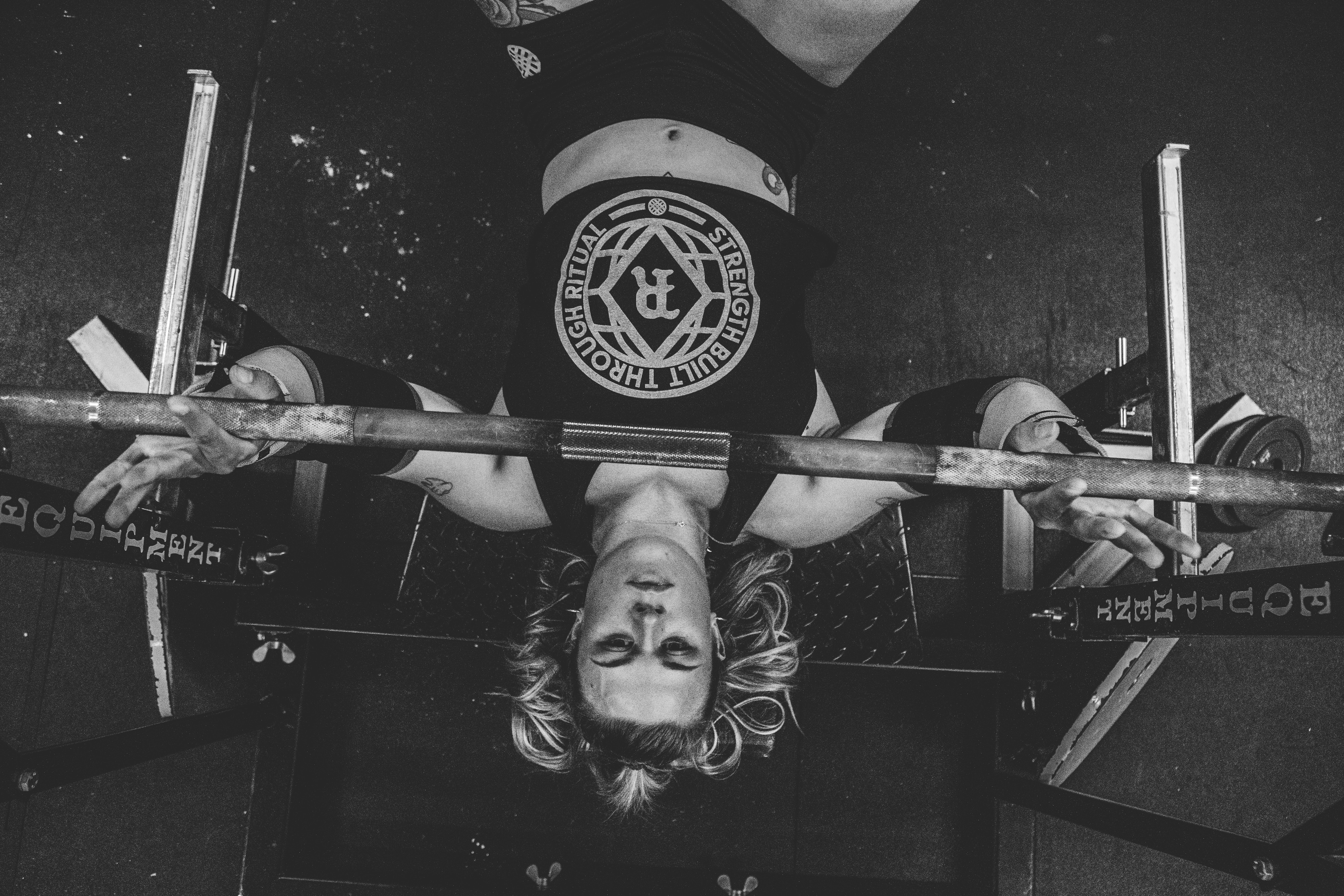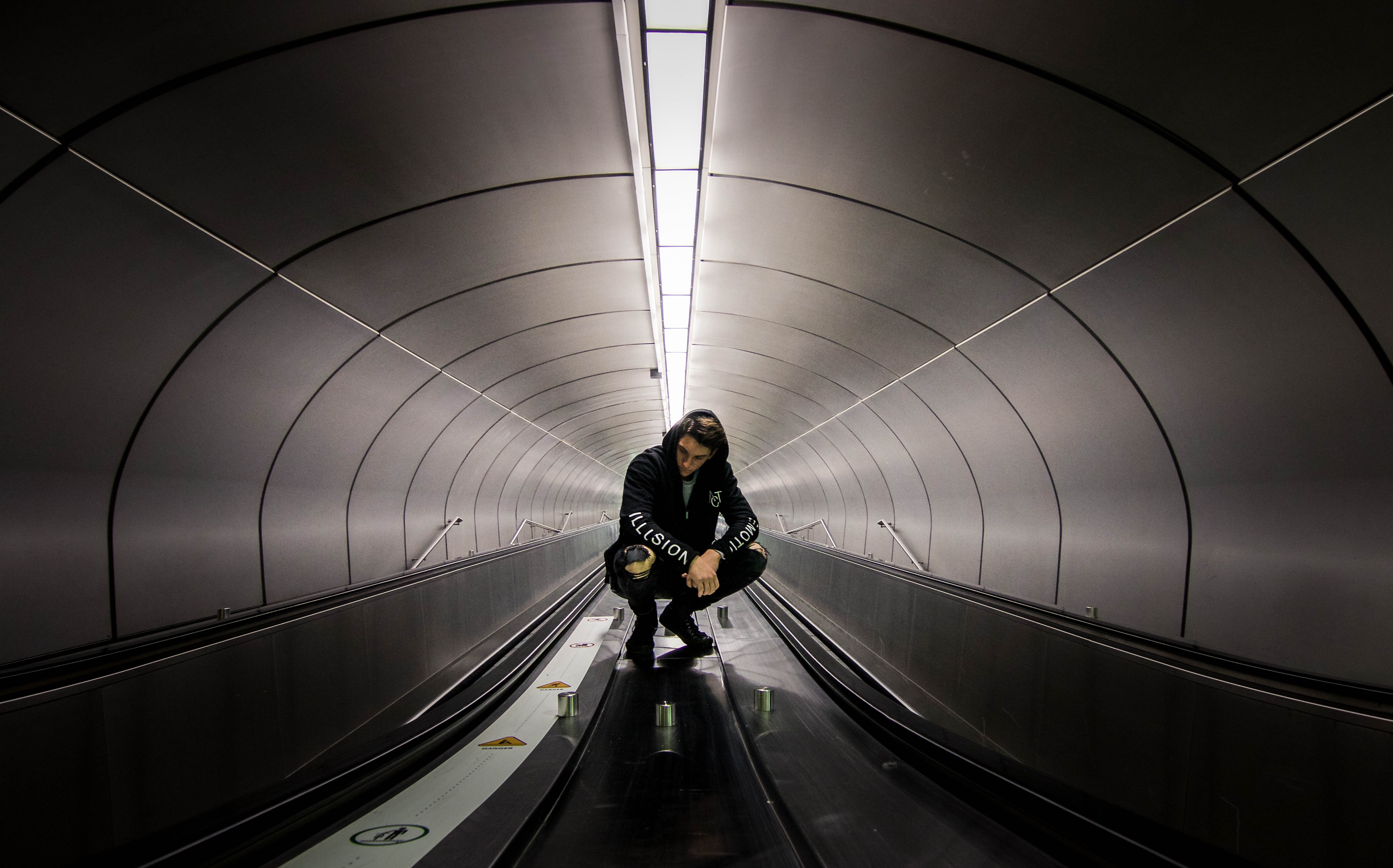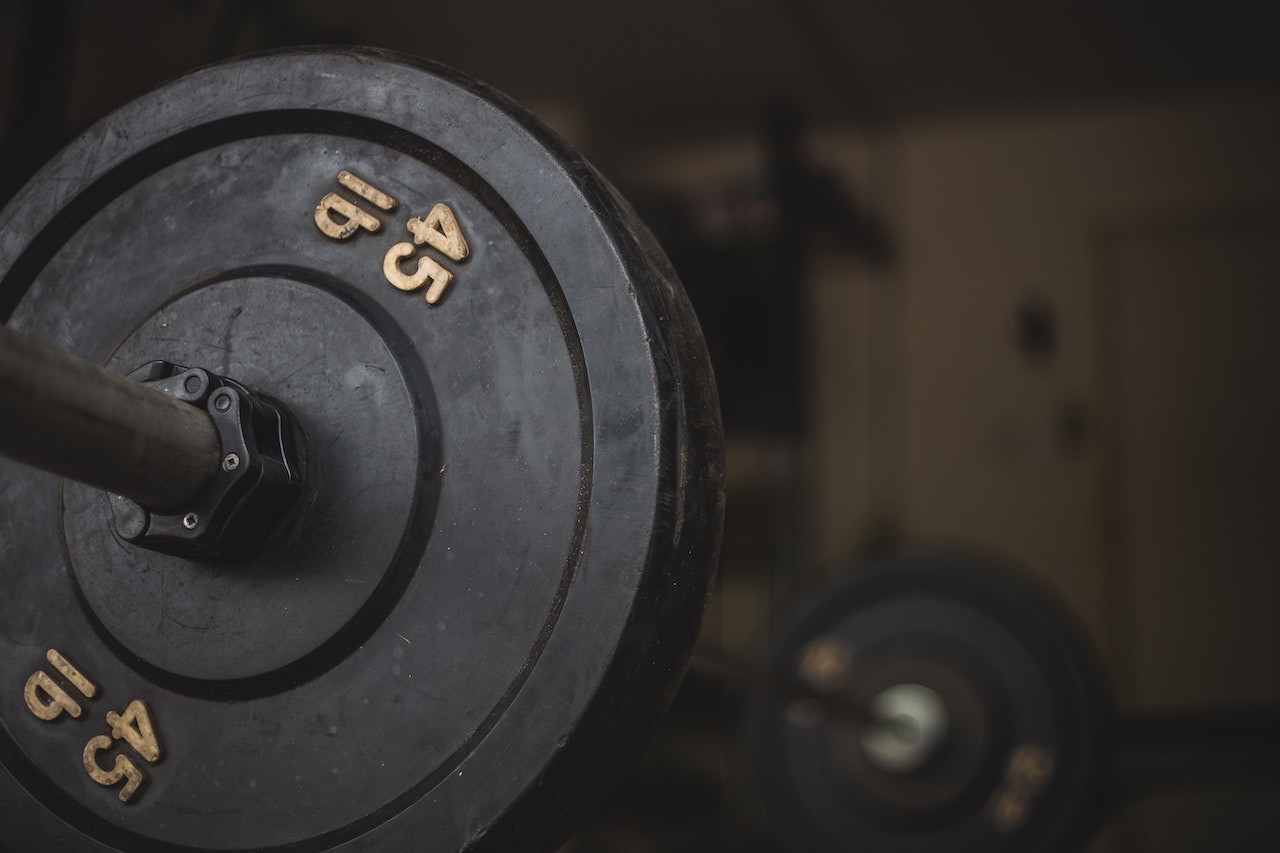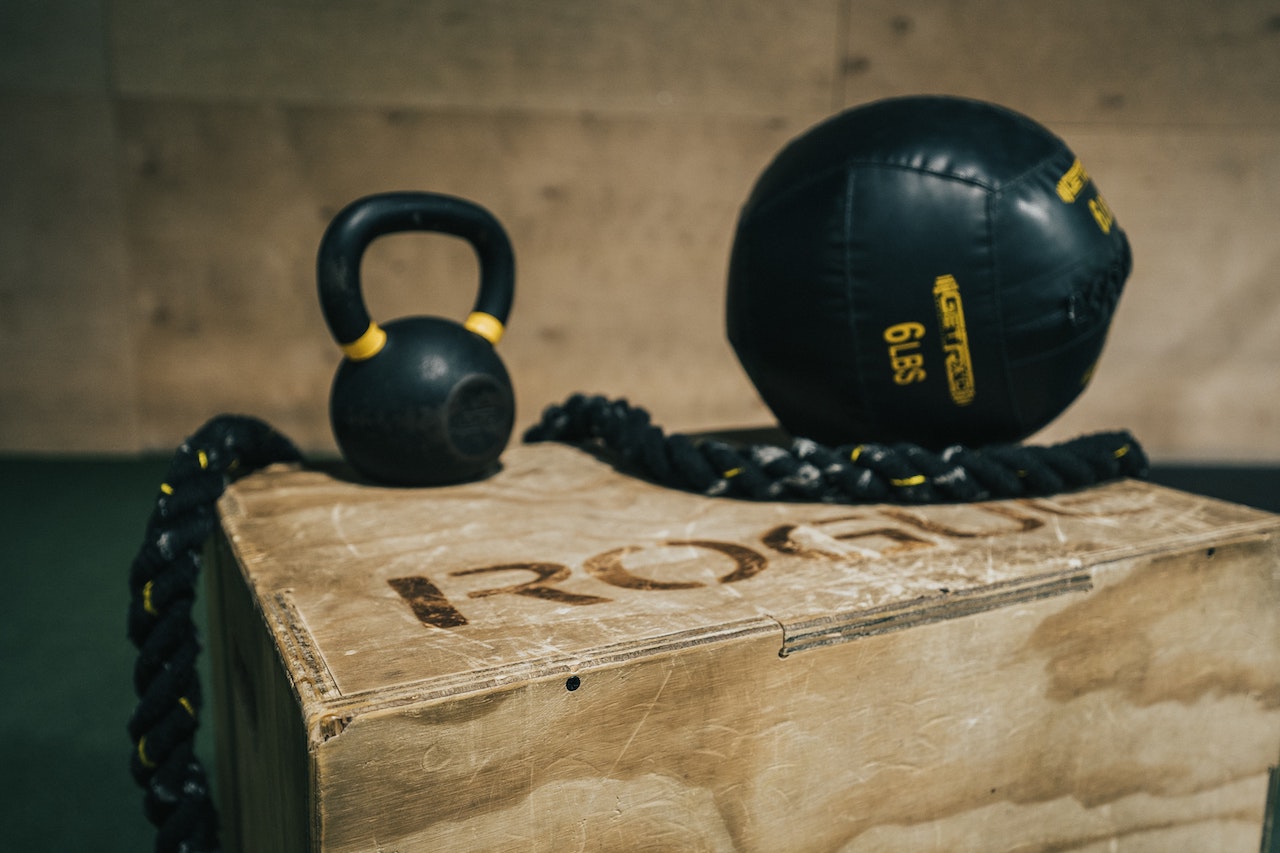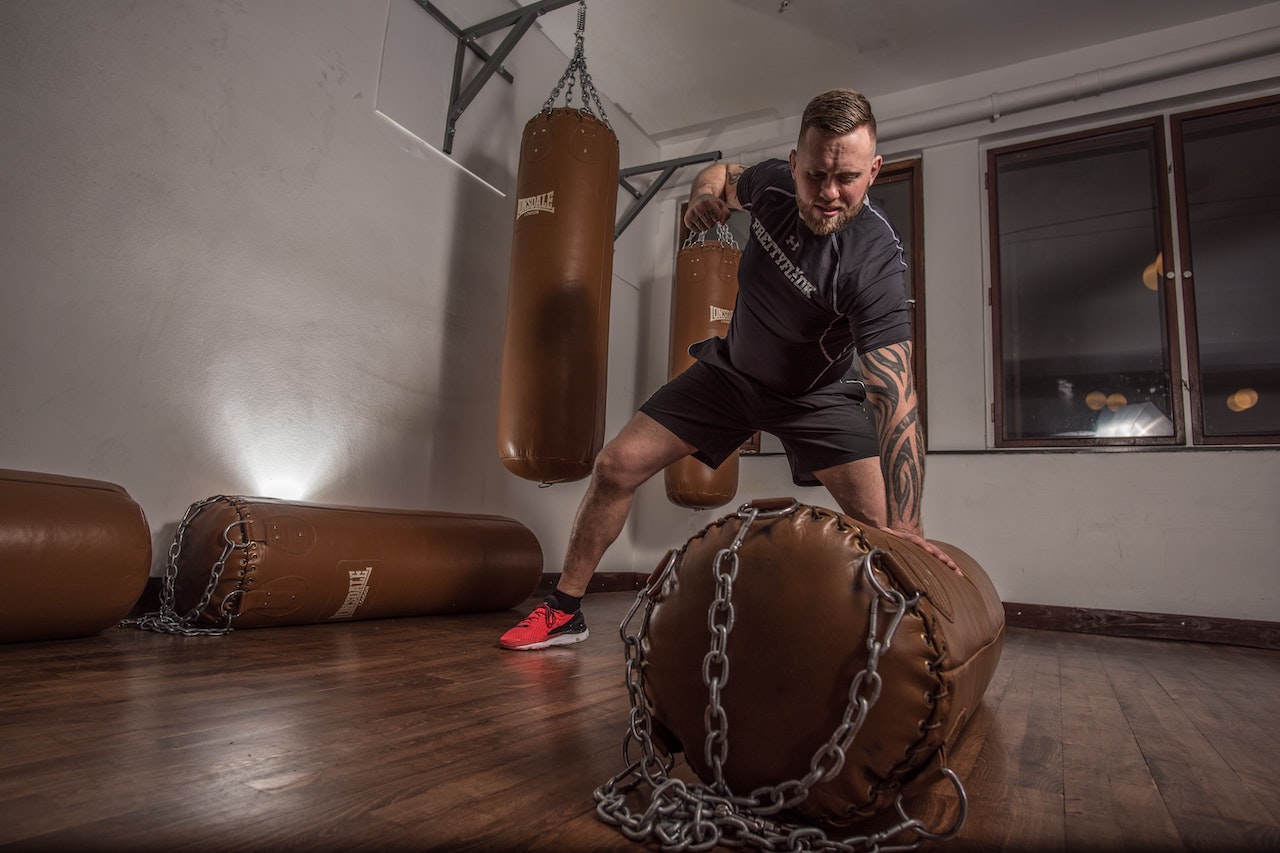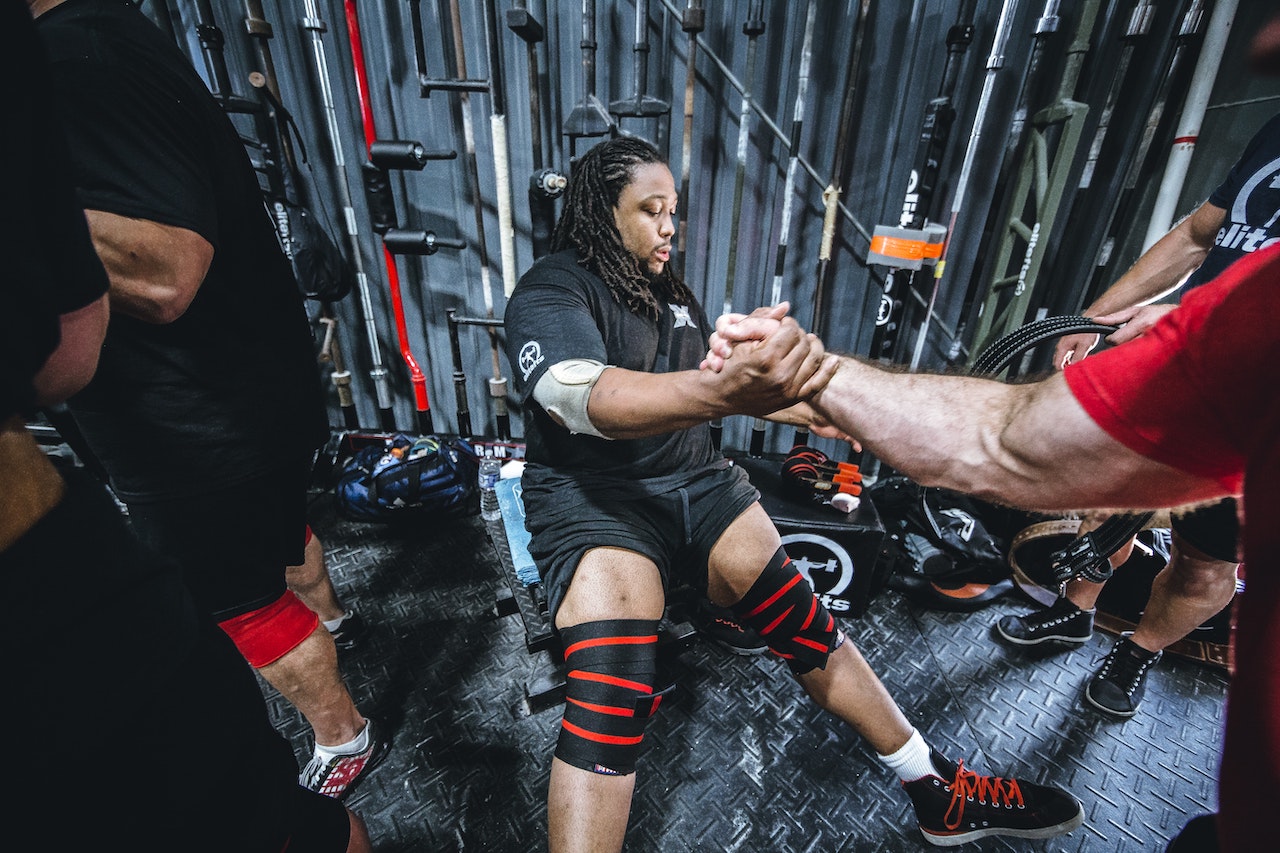Practicing yoga can also be good for building muscles because there is strength training and it is strength and stretching that are done at the same time, which of course requires choosing the right postures.
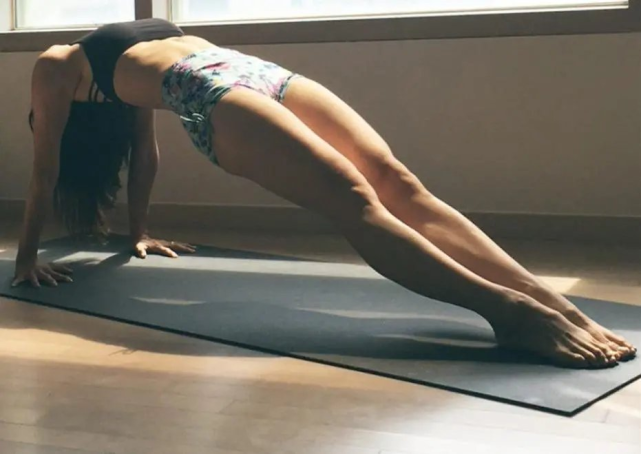
Poses like baby pose and pigeon pose are excellent poses to relax and improve flexibility, but you are not really using your body to generate any type of resistance so it is difficult to build muscle.

Poses like four pillar brace and warrior iii are great for activating your core and challenging your body, so you can build muscle with these poses.
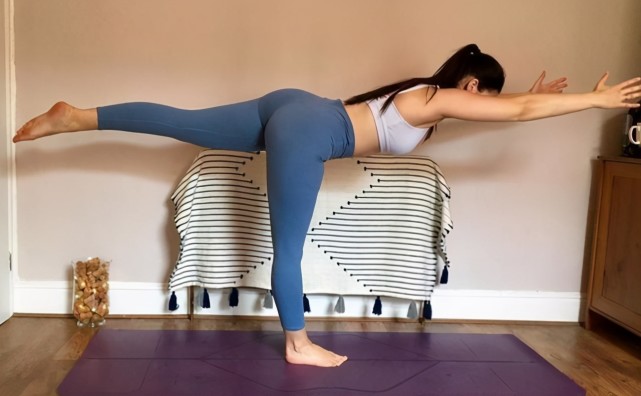
The following sequences are just fine
1. Cat/cow pose
A combination of these two poses. Great for warming up the spine and seeing where your tight areas are.

On all fours, exhale, chest in, back arched, chin looking for collarbone, eyes to navel, back as far up as possible in an arc
Inhale, head up, chest up, hips up, abdomen tighten and sink. Keep your body and breath in sync.
Move through dynamic cat/bull pose.
2. Downward facing dog
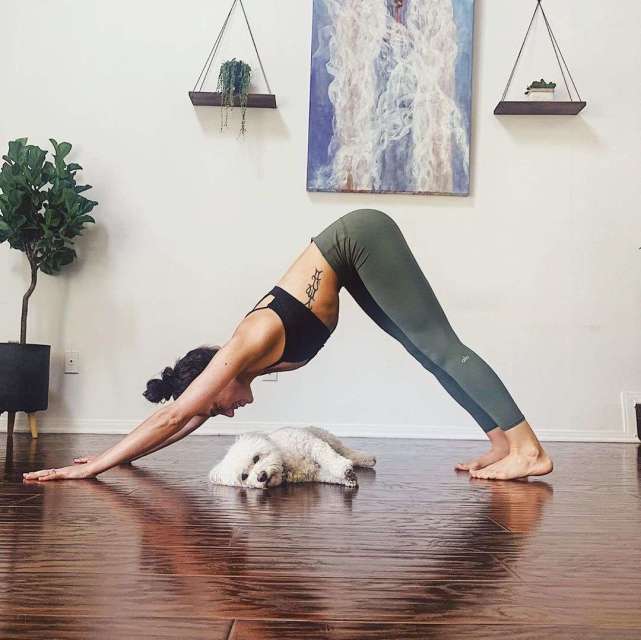
Get on all fours. Inhale, push the hips up and back, straighten the legs and push the heels towards the floor.
Activate your arms, keeping your shoulders away from your ears. Tighten your core and pull your belly button upwards towards your spine.
Tip: Avoid all weight falling on the upper body. Ensure the whole body is engaged
3. Standing forward bend
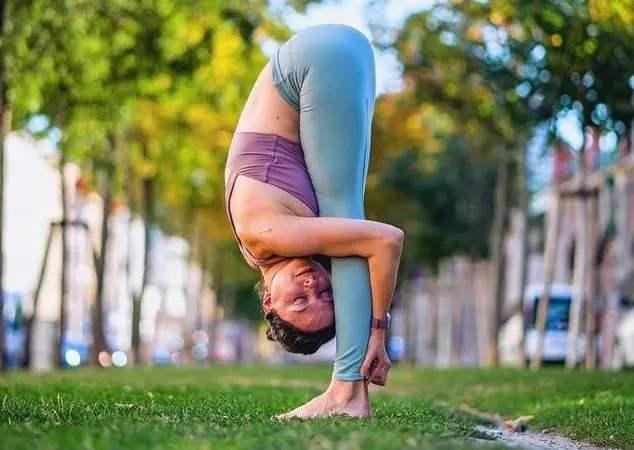
Stand in mountain pose, inhale, raise your arms up, exhale and fold forward from the hips
Reach your hands towards the floor or grab your ankles and with each exhalation, fold more. Keep the spine extended
Tip: If you are unable to grab your legs or ankles, use a yoga block and adjust the height to suit your needs. You can also grab the opposite elbow.
4. Standing backbends
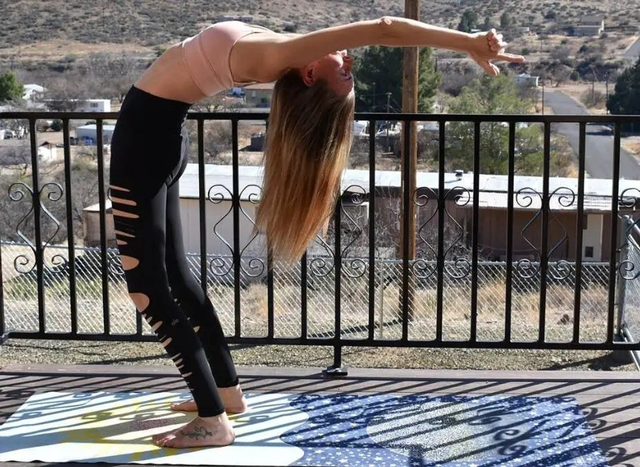
On the next inhalation, raise your arms up and over your head and bend backwards.
Listen to your body, this is a chest opening asana and you will be able to understand it more deeply with practice.
Tip: If bending backwards is too difficult, bend your arms at a 90 degree angle to your sides.
5. Mountain pose
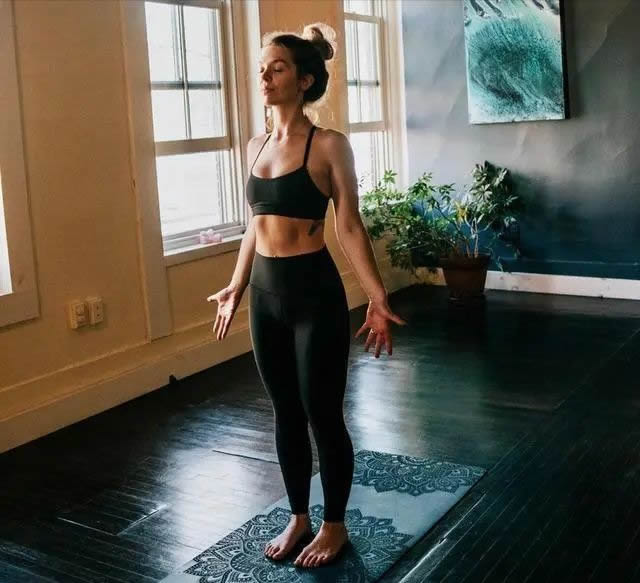
Start with a standing backbend and slowly return to square. Place your hands at your sides, palms facing forward.
With your feet on the ground, activate your legs, lift your chest and lower your shoulders.
Tip: In this pose your body should remain active, activating your core and landing on all four corners of your feet.
6. Warrior ii
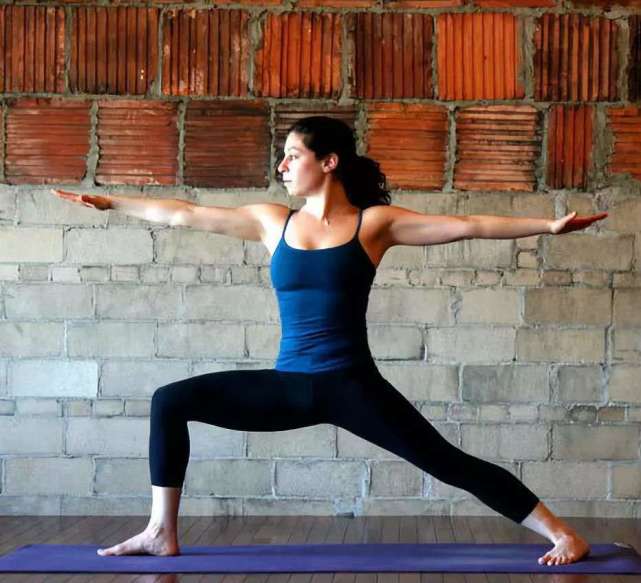
Take a step back with your left foot and rotate your back toes 45 degrees with your right foot facing forward.
Face your body to the left side of the room. Bend your front leg as much as possible to 90 degrees and spread your arms to your sides.
Tip: Take care to ensure you do not hyperextend your knees to avoid injury.
7. Triangle pose
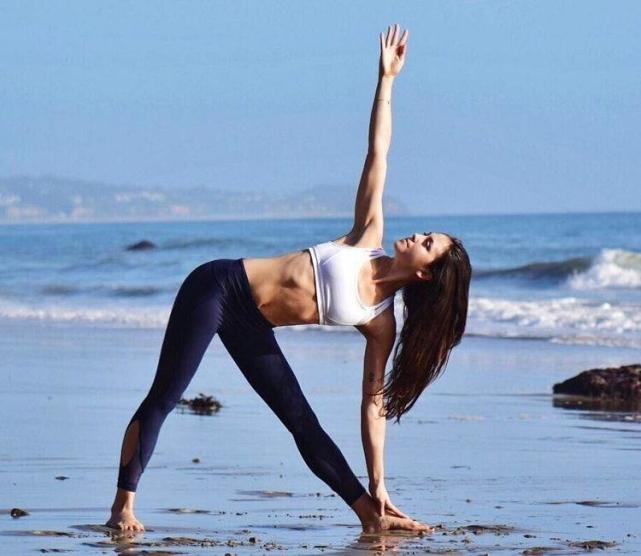
From warrior ii, keep your feet in place and straighten your front leg.
Slowly turn your body forward and place your right hand on the inside of your right foot. Raise the left arm. Open the chest.
8. Side angle stretch
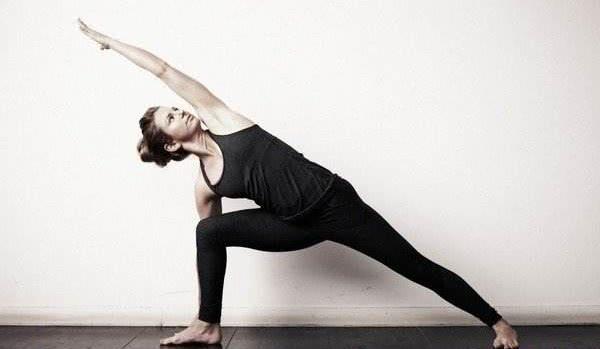
Start in triangle pose, feet still, bend your front leg as in warrior ii.
Right knee at a 90 degree angle, hands flat on the floor. Keep your left arm raised and extended towards the front of the room
Cue: Actively lift through the chest to get a good side stretch.
9. Phantom chair pose
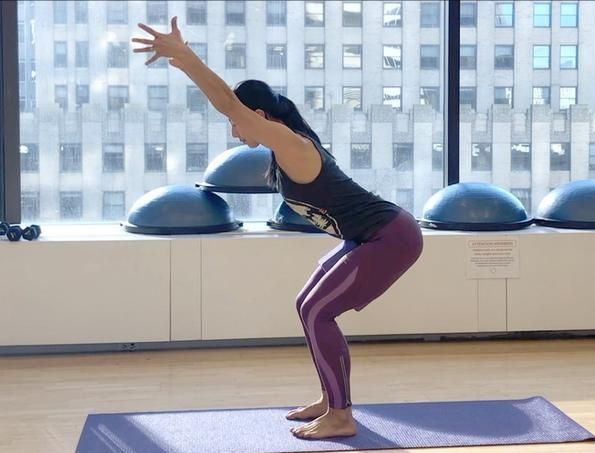
Returning to warrior ii , keeping the right leg bent, retract the left foot while rotating the torso towards the front of the room and raising the arms up.
With feet together and most of your weight on your heels, exhale and lift your chest.
Hold for 5 breaths, then straighten your legs into standing forward bend.
Tip: If this pose is too difficult, put your hands together in front of your chest or keep your feet slightly apart.
10. Four pillar support
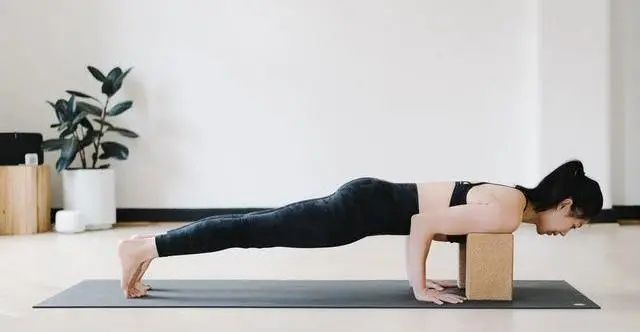
Step back with your feet into plank pose. Bend your elbows and slowly lower your body to hover above the floor.
Activate the core. Maintain a neutral spine
Tip: Listen to your body and allow your knees to touch the ground if you are unable to do a four-poster support.
11. Cobra pose
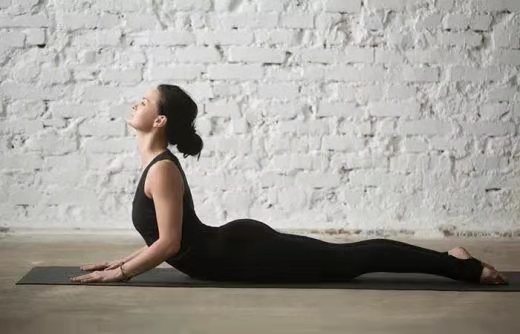
Begin in four-pillar support and slowly lower your body to the floor. Keep your legs and toes fully on the ground. Place your forehead on the floor and then lift your chest and abdomen off the floor on the next exhalation.
Stay here for 5 breaths, then return to downward facing dog with hips up.
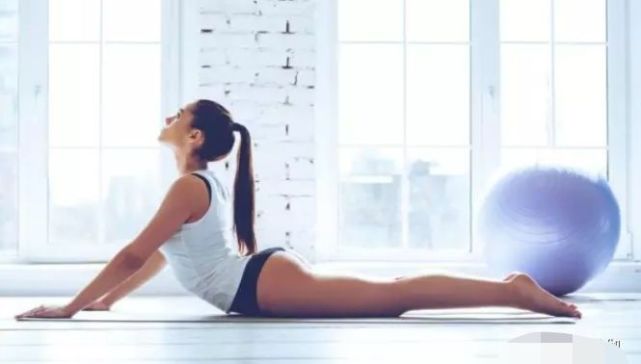
Tip: If your lower back is tight, opening your legs a little wider than your hips can relieve the tension.
From downward facing dog, return to step 3 (standing forward bend) and repeat the sequence on the other side
12. Pigeon pose
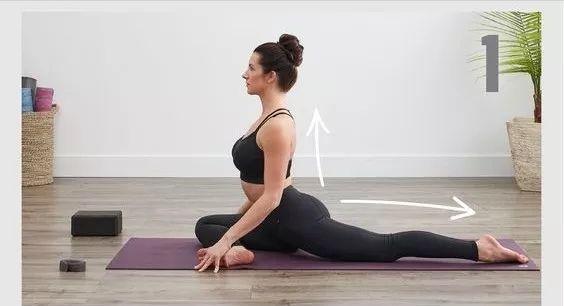
Begin in downward facing dog, placing the right leg forward underneath and the outside of the right calf on the floor.
With your left leg on the ground and your back toes pointing towards the floor, adjust your hips so that they remain horizontal.
Lift your chest as you raise your arms up. Hold for 15 seconds
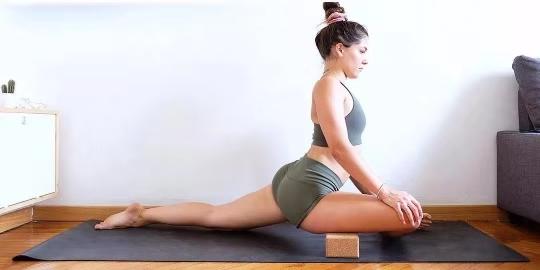
Tip: If this is too difficult, place a yoga block under the side of the bent leg to release the tension during the stretch.
*from here, return to downward dog and repeat on the other side!
13. Seated forward bend

Return to walking stick pose. Straighten your legs. Keep your feet together and hook your toes back to extend your spine.
Lift your arms up, activate your core and slowly fold forward. If you cannot reach your feet, grab your calves or ankles, or use a yoga strap.
On the exhale, keep the back extended and bend deeply forward. Hold for 5 breaths
Resting pose: Stretched corpse pose
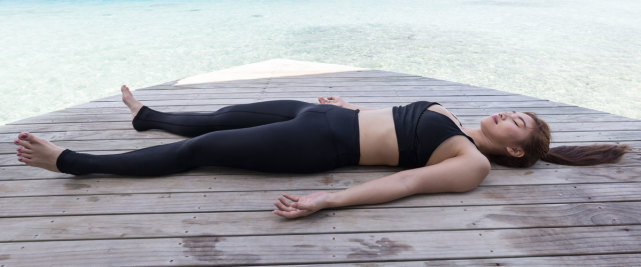
Stretcher pose is the ultimate resting pose to relax and absorb the benefits of the practice.

